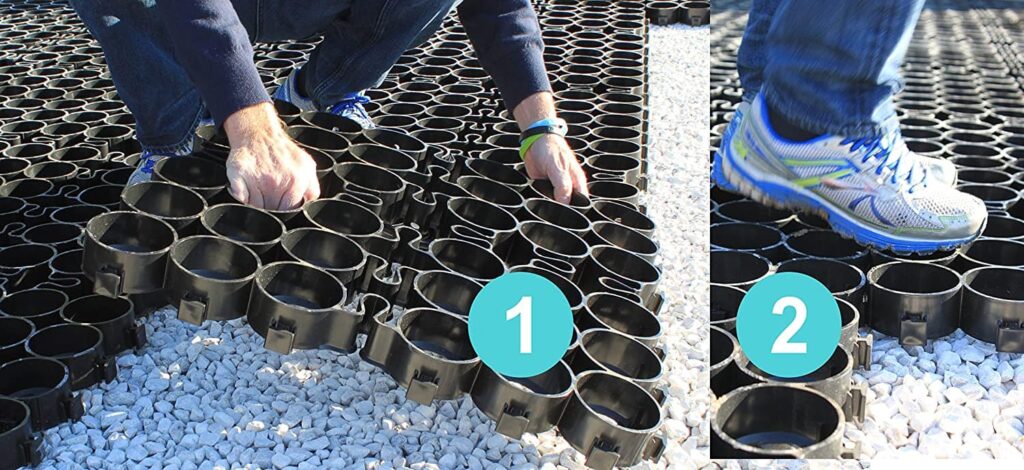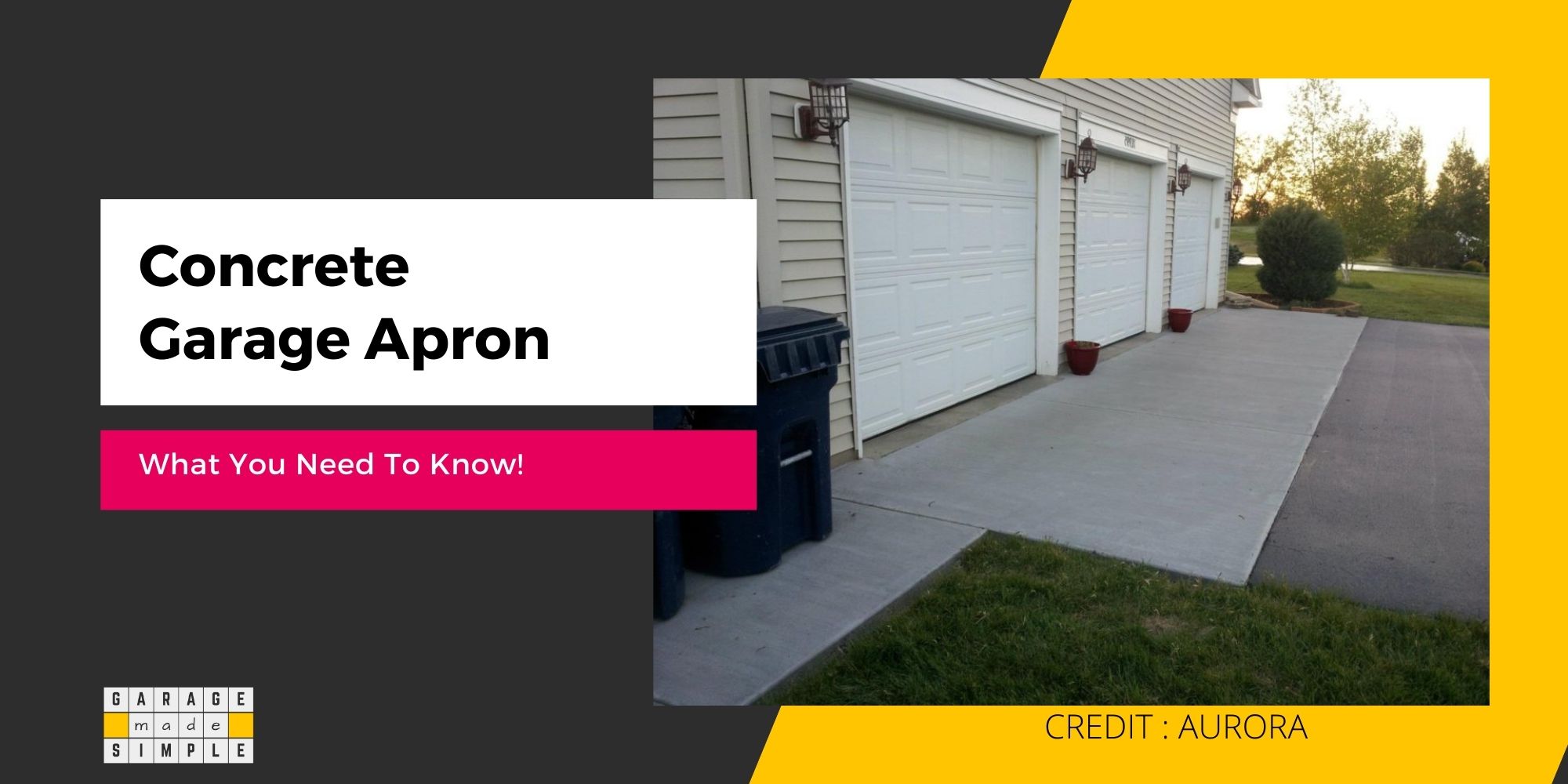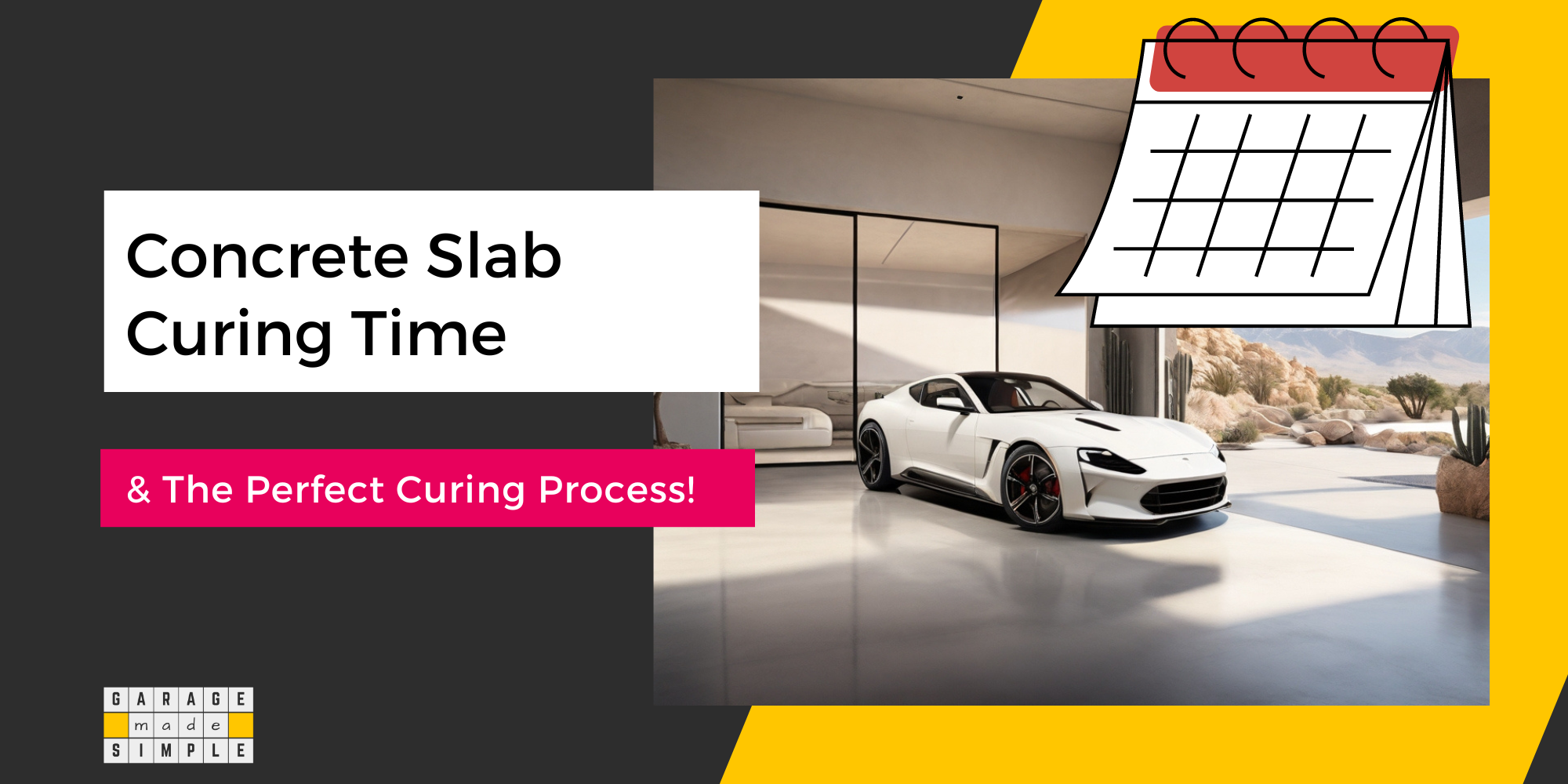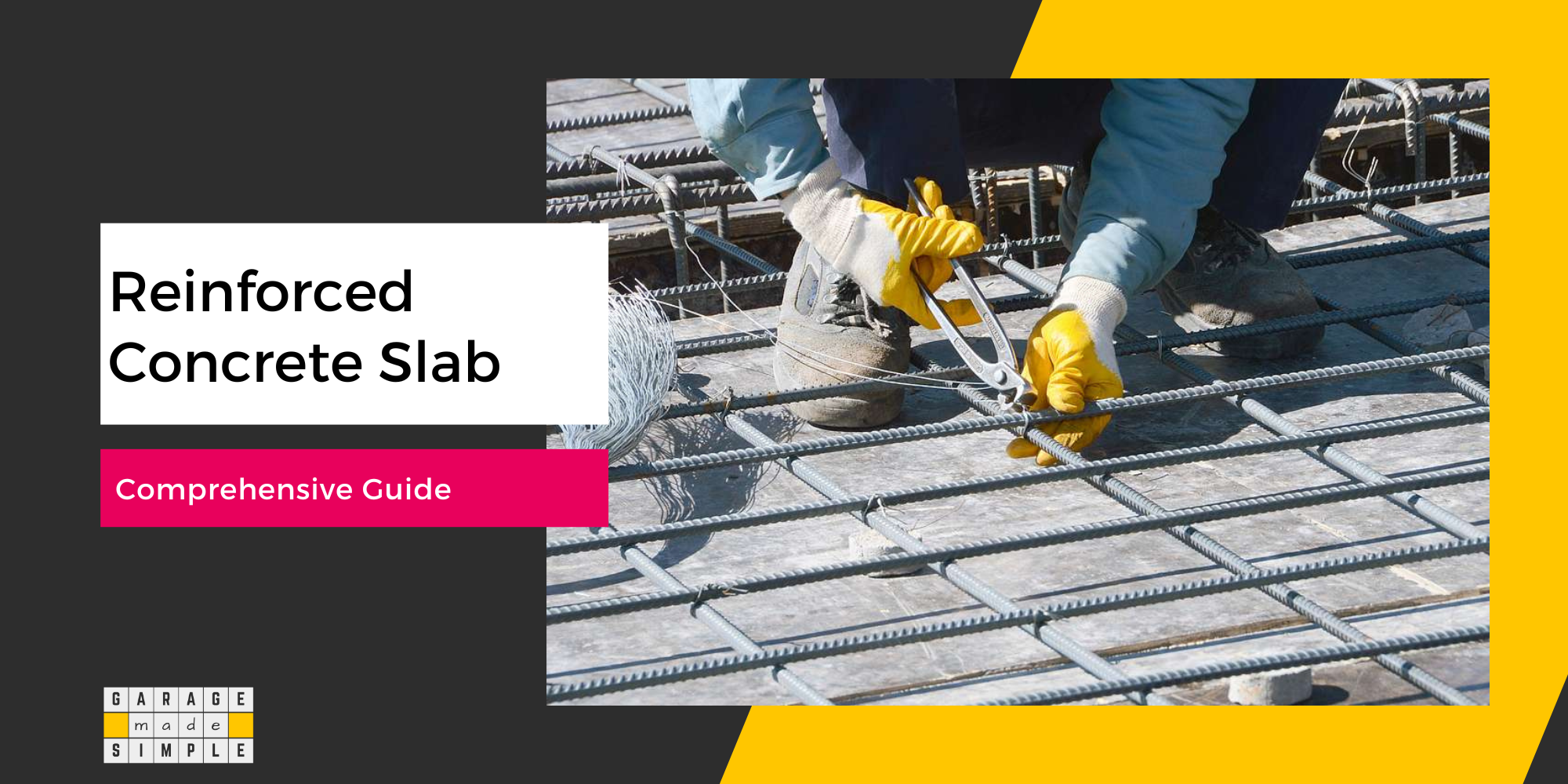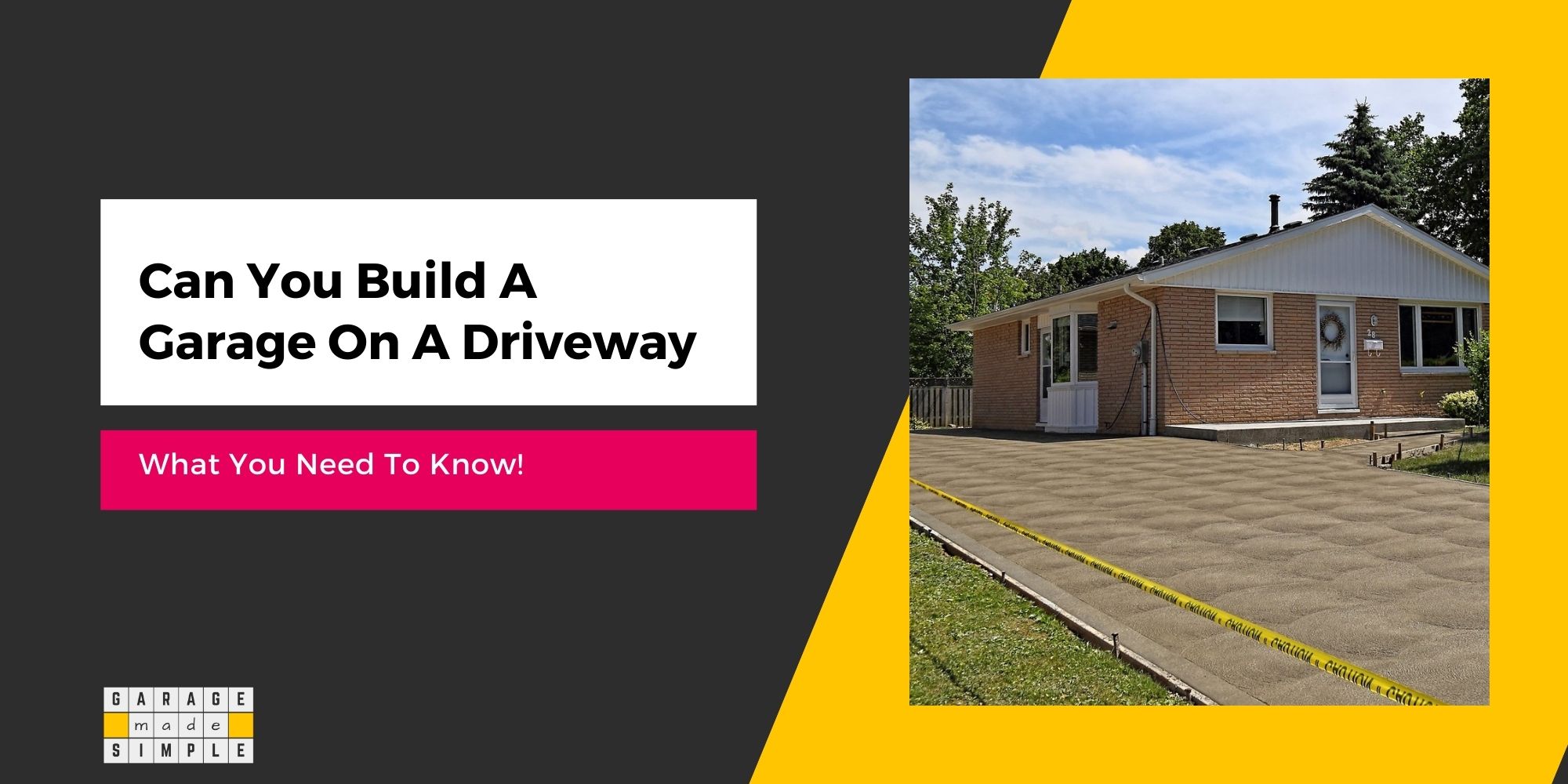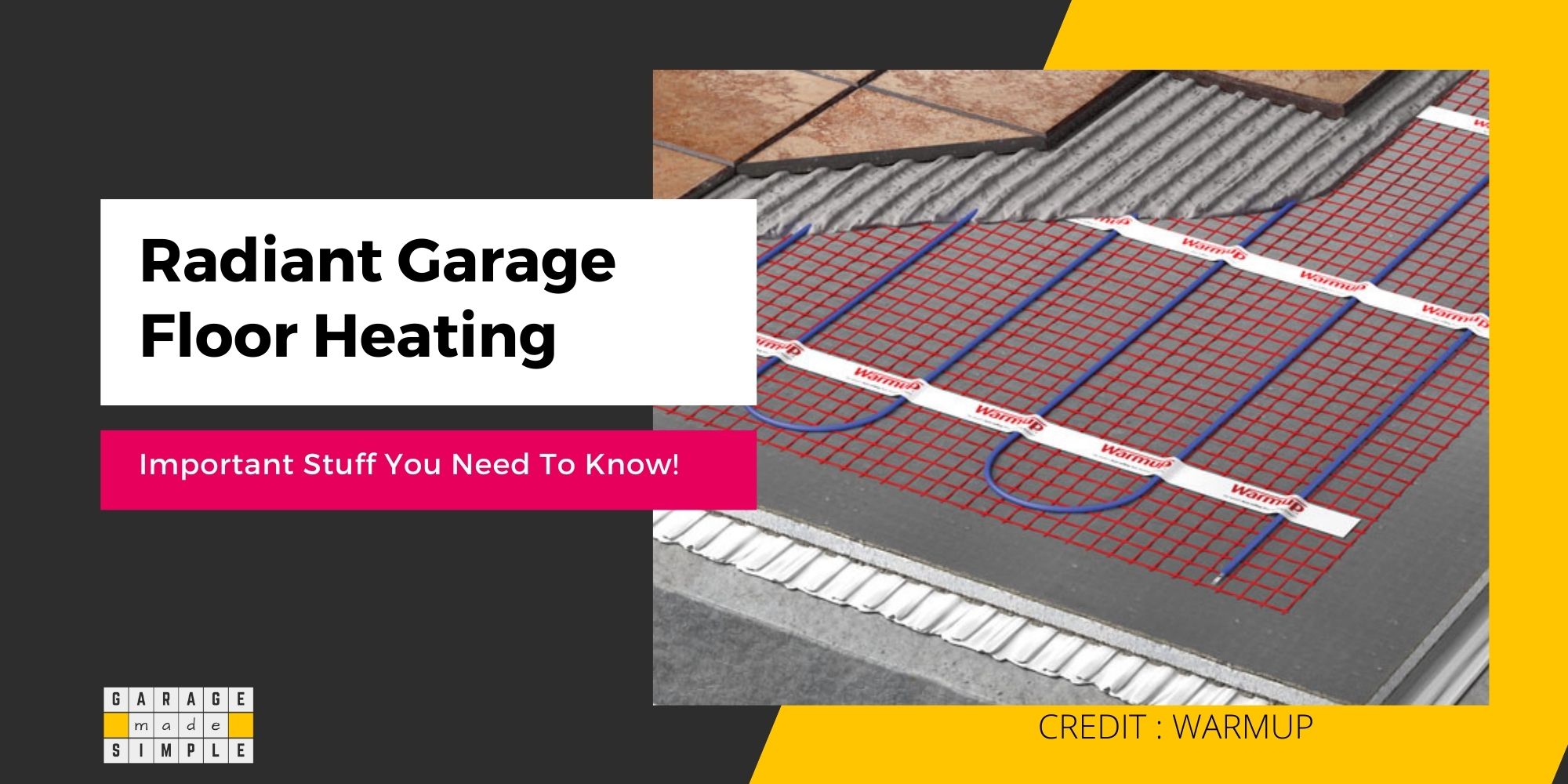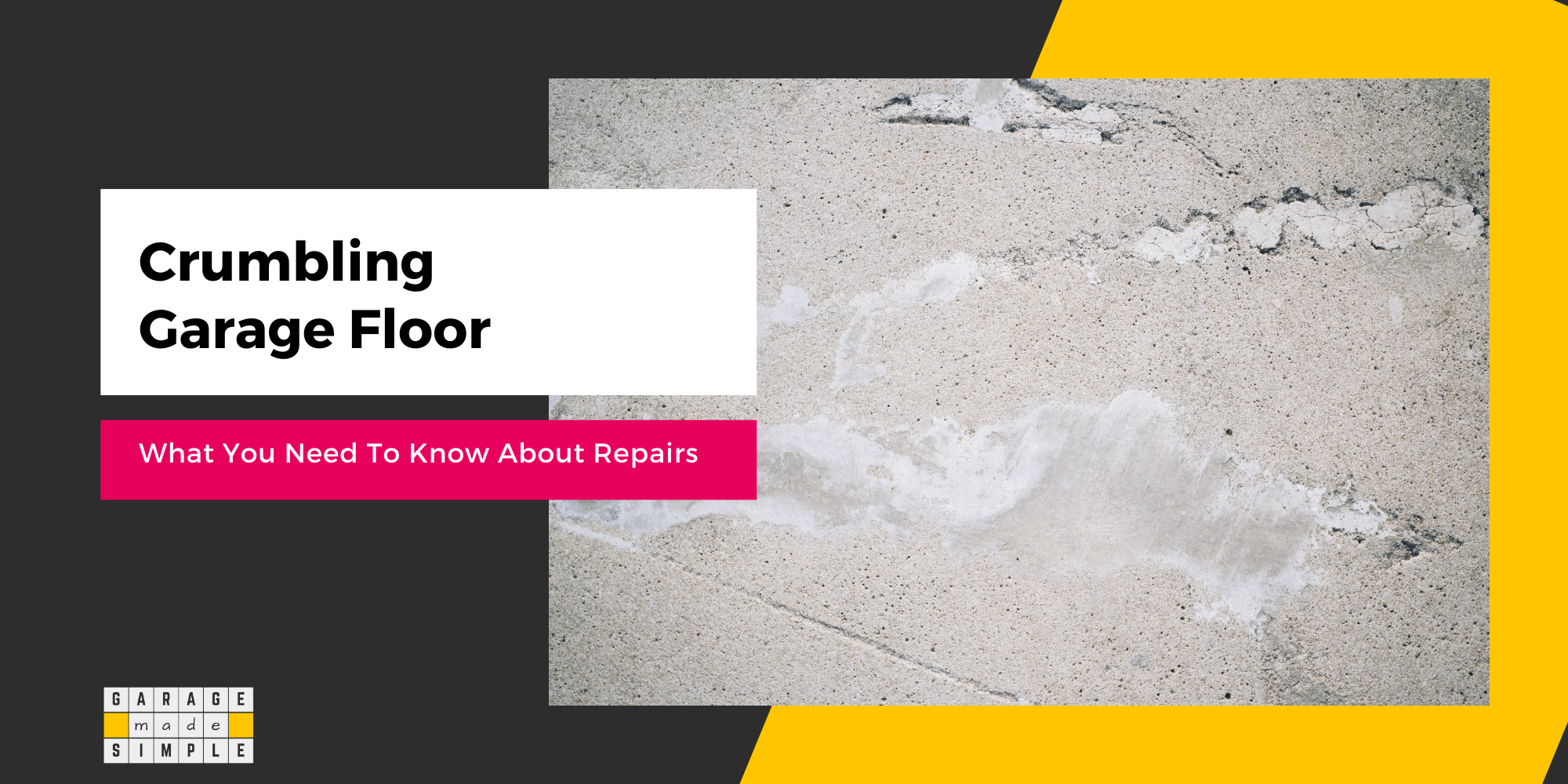Concrete Vs Gravel Garage Floors: Comprehensive Guide [2024]
As an Amazon Associate, I earn from qualifying purchases.
You might wonder if comparing concrete and gravel garage floors is worthwhile. In many ways, a concrete garage floor is superior, which is why most garages have concrete floors.
However, a gravel garage floor might be more practical in some situations.
A concrete garage floor is smooth, sturdy, and durable, but it is also expensive and time-consuming to install. In contrast, a gravel garage floor is a cheaper alternative that can be built quickly. However, it will be uneven, unstable, and require frequent maintenance.
Consider a gravel garage floor instead of concrete if you are:
- On a tight budget
- Short on time
- Planning a DIY project
- Installing a prefab garage
- Using the garage mainly for parking vehicles or storing relatively inexpensive items
- Using the garage infrequently, such as at a vacation cottage
- Wanting to avoid slippery concrete floors
This post will explain what to expect from a gravel garage floor and share steps to maximize its benefits. I will also compare it to concrete garage floors where relevant.
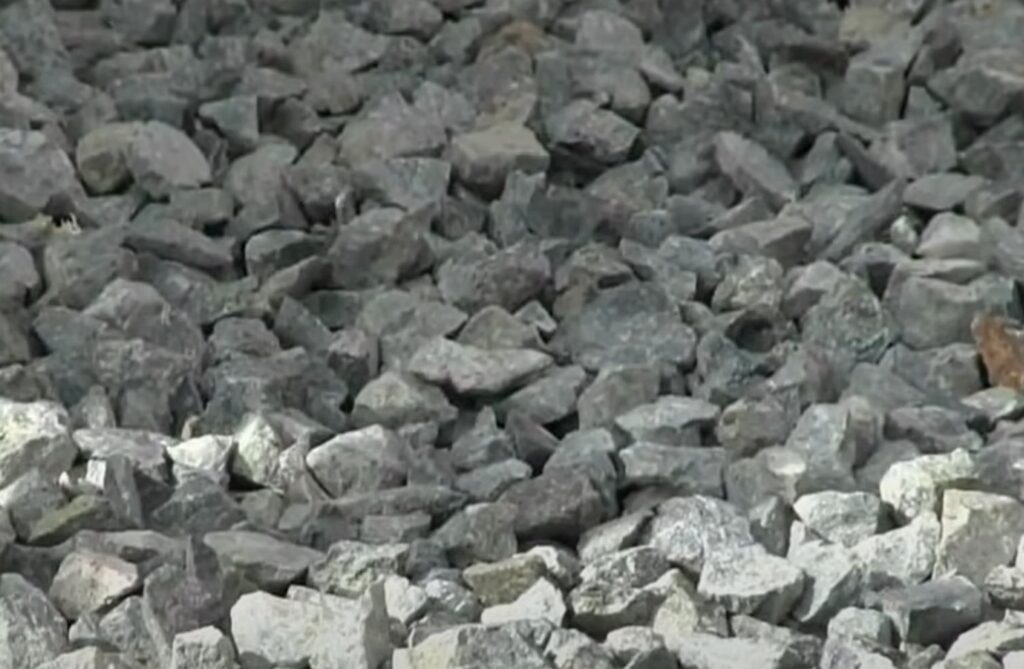
You can always find out more about concrete garage floors by reading my blog post 7 Important Things To Know About A Concrete Garage Floor.
Advantages of a Gravel Garage Floor
1. Drainage and Moisture Control
Gravel is water-permeable. Naturally, a gravel garage floor allows water to seep through and be absorbed by the grade below.
A gravel garage floor is a sure way to avoid water pooling in your garage and protect cars and other stored items from water damage.
A gravel garage floor is an excellent option if you live in an area with heavy rainfall or snow.
2. Cost-Effectiveness
There are occasions when budget matters, and gravel flooring won’t break the bank. Not every garage needs a shiny epoxy-coated concrete floor!
Compared to other flooring options, gravel is remarkably affordable, making it an attractive choice for cost-conscious homeowners.
3. Easy Installation
If you fancy yourself as a handyman, you’ll love this. Laying a garage gravel floor is a breeze to install!
You can roll up your sleeves and lay it down without the need for any specialized skills or tools.
4. Fluidity
Who would have thought that the lack of rigidity of a gravel garage floor, as compared to say a rigid concrete garage floor could actually be a blessing in disguise?
In case the grade below the garage floor is prone to shifting due to soil movement or tree root growth, chances are it will result in large cracks in the concrete garage floor.
However, you do not need to worry about cracks in a gravel garage floor. If the gravel shifts, just smoothen it out with a rake. Add some extra gravel, if need be.
This type of fluidity also makes a gravel garage floor terrific for parking heavy vehicles such as farm equipment or RVs.
5. Versatility
Whether you use your garage for parking, storage, or as a workshop, gravel flooring can handle it all. You can actually get a fairly attractive gravel garage floor by a combination of gravel of different sizes, textures, and colors.
Generally speaking, a gravel garage floor is more suited for rustic environments. Great for a cottage by the lake, a cabin in the mountains or a farmhouse garage to park tractors and trailers!
Disadvantages of a Gravel Garage Floor
1. Dust and Debris
Quite obviously a gravel garage floor is not a smooth surface. Naturally, it has a tendency to trap dust, dirt, dry leaves, and all other types of debris.
Keeping a gravel garage floor spic and span is quite a challenge, to say the least. Pressure washing is not much of an option. Manually picking up larger debris, and using a stiff broom or brush may be the only practical option.
Needless to say, it may require a bit of extra effort to keep your garage tidy.
2. Uneven Surface
The uneven gravel garage floor may not appeal to many homeowners. To be honest it has poor aesthetics and is not a good match for most architectural home styles.
The uneven surface also makes it difficult to use the garage garage floor impractical for many applications. For example, you can not use a dolly or a trolley on it.
3. Regular Gravel Replenishment
While gravel is relatively low-maintenance, it’s not entirely maintenance-free. You’ll need to rake and replenish the gravel occasionally to keep it in top shape.
4. Encourages Weeds and Pests
Gravel provides an ideal environment for weed seeds to settle and germinate. As the gravel surface is not solid and compact, it allows weed seeds to find their way into the spaces between the gravel particles.
Gravel also retains moisture and nutrients, which foster weed and pest growth.
5. Limited Insulation
If you’re hoping for some insulation in your garage, gravel won’t be much help. It doesn’t provide much protection against extreme temperatures.
This can be a serious problem in cold and very cold climates.
Choosing the Right Gravel for Your Garage Floor
When deciding on the type of gravel for your garage floor, there are a few key things to keep in mind. Let’s break it down:
Gravel Size
The size of the gravel affects its performance on compaction and permeability. Small gravel compacts tightly but drains slowly, while larger stones offer better stability and faster drainage.
Gravel Shape
The shape of the gravel determines the nature of interlocking. Angular gravel tends to interlock securely, providing stability, while rounded rocks result in a smoother finish and a more comfortable walking surface.
Color and Aesthetics
The color, or rather the color mix, influences the overall look and appearance of the gravel garage floor. Choose a color that complements or contrasts with your garage’s design.
Some specific gravel types that are commonly used:
Pea Gravel
- Size: Small (about 1/4 inch)
- Colors: Various options
- Pros: Budget-friendly, easy to install
- Cons: Less stable, can be messy, may get stuck in tires or shoes
- Use: Attractive top layer over other gravel types
Crushed Stone
- Size: Medium (about 3/4 inch)
- Colors: Gray or white
- Pros: Durable, stable, good traction and drainage
- Cons: Rough underfoot, generates some noise, may create dust or damage concrete
- Use: Popular choice for driveways and garages
Decomposed Granite
- Size: Finer (around 1/8 inch)
- Colors: Brown or tan shades
- Pros: Creates a compact and smooth surface, suitable for leveling uneven floors or a natural look
- Cons: Can be dusty and prone to erosion, may wash away or stain easily
- Use: Consider mixing with resin or cement for enhanced durability and stability
How to Prepare the Base for a Gravel Garage Floor?
The best way to prepare a good gravel garage floor is to use a T-shaped Foundation, just as you would do for a concrete garage floor. Begin by marking out the area of the garage floor and driving four stakes at the four corners.
T-Shaped Foundation
The T-shaped foundation gets its name from the letter T as it looks like an inverted T in cross-section.
The footing is wider than the foundation wall and sits below the frost line. You can cast concrete footings in situ or use readymade concrete or steel footings (saves a lot of time!).
The foundation wall, thinner than the footing, sits on the footing and extends above grade level.
Prepare the Base
The exposed soil should be smoothed and any low areas filled up. Tamp the surface using a hand or mechanical tamper such that the soil is firm enough. You will know if you can walk on it without leaving footprints.
Check out Bully Tools 92540 Tamper Thick Steel Plate with Steel Handle, 49.25-Inch on Amazon.
Cover the Base with Geotextile
Always put woven geotextile over the base that you have prepared before you put any gravel. Make sure that the rolls overlap each other by at least 6 inches and are secured to the grade by landscape staples.
The geotextile will
- keep the soil and gravel separate and prevent the gravel from sinking into the soil
- stabilize the base and the gravel floor
- stop weeds from growing on your gravel garage floor
Mutual WF200 Polyethylene Woven Geotextile Fabric prolongs the surface life and stabilizes the foundation while providing a rugged separation layer between aggregate and subgrade.
Mutual Polyethylene Woven Geotextile Fabric
Mutual Polyethylene Woven Geotextile Fabric
Mutual woven geotextiles are used to hold soil in place. Woven geotextiles are a time and money-saving alternative to traditional methods using graded aggregate or sand filters. They prolong the surface life and stabilize the foundation while providing a rugged separation layer between aggregate and subgrade.
Now you are ready to start laying the gravel.
What Should be the Gravel Floor Thickness?
To get the best results, lay at least 6” of gravel in two layers. The first layer should be 4” thick and should use larger and harder gravel. The second layer should be 2” and should use smaller gravel mixed with some fine lime dust.
You can make the gravel garage floor more durable by increasing the thickness and by increasing the number of layers. For example, you could make the bottom layer 4”, the middle layer 3” and the top layer 2”.
The gravel size should be the largest at the bottom and get smaller as you move up the layers.
How do you Lay the Gravel Floor for a Garage?
Bottom Gravel Layer
For the bottom layer, use clean and hard gravel of average size of 3/4″. Mixing it up with a small percentage of smaller (between 1/4″ to 1/2″) gravel will help fill in the voids.
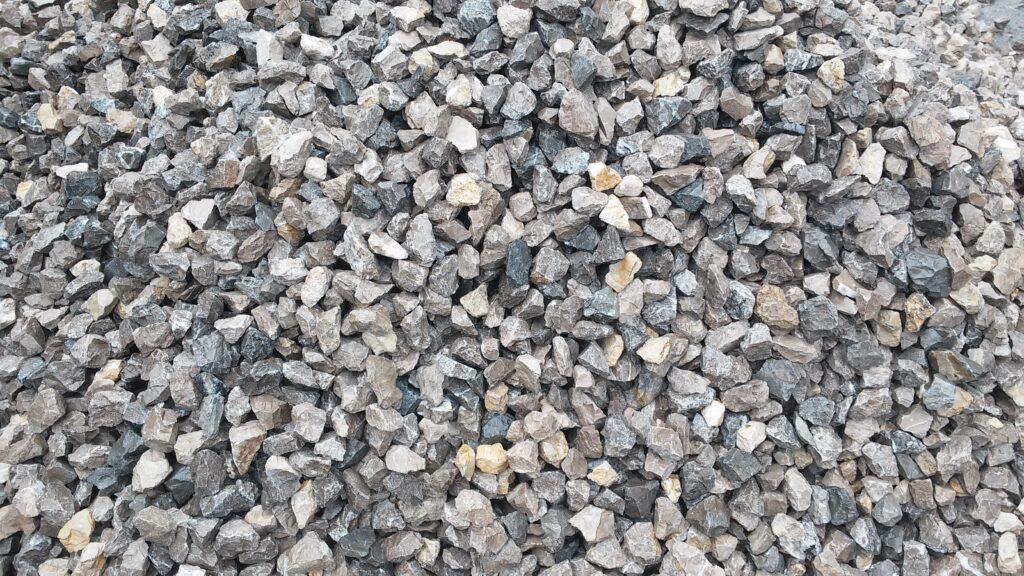
The gravel should be broken stone and must be uneven. The uneven gravel will interlock with each other when compacted.
Do not use smooth or round gravel. Such gravel will move easily when you park your cars or move any heavy machinery on it.
The bottom layer should be at least 4” thick. Compact this layer before putting the next layer. Pitch the bottom layer towards a French drain or the garage door so that water does not pool in the garage.
Vapor Barrier
Gravel is porous and the grade below the bottom layer is bound to have moisture in it. The moisture will rise through wicking action. More so if and when it rains heavily.
Geotextile is not a vapor barrier, so this is the time to put a layer of good quality vapor barrier on top of the bottom gravel layer. Once again make sure that the vapor barrier sheets overlap by at least 6” and there are no tears or cuts.
Top Gravel Layer
Now the top layer of the gravel floor can be laid. It is better to use smaller-sized gravel, mixed with fine limestone powder. This will result in a smoother garage floor after compacting.
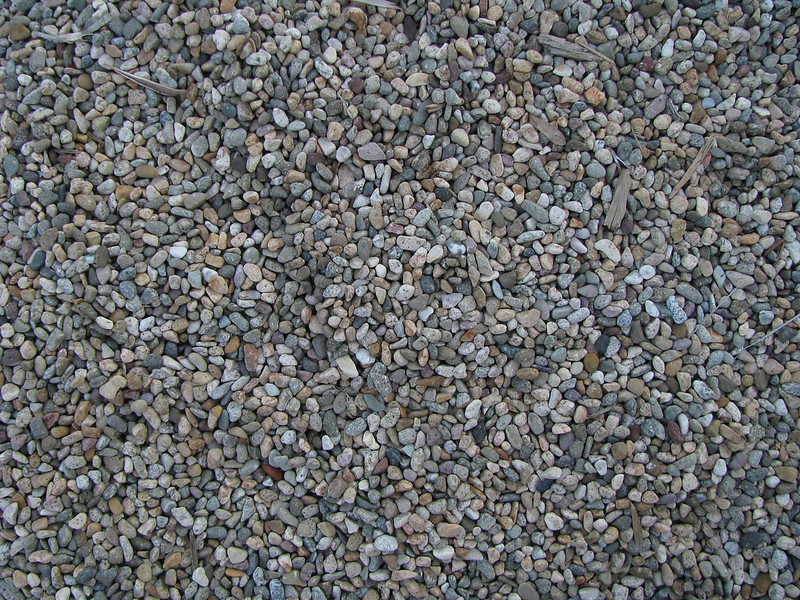
Make this layer 3” – 4” thick, so that after compacting it is still more than 2” thick. Compact this layer as tightly as possible while maintaining the pitch. Light sprinkling of water before and during compacting will help keep the gravel in place for longer.
TRUEGRID | PRO Plus Permeable Pavers |
TRUEGRID | PRO Plus Permeable Pavers |
- HEAVY DUTY
- MADE IN USA & RECYCLED
- ALL WEATHER
- EASY MAINTENANCE
- The PRO PLUS are best for parking lots, garage flooring, driveways, etc.
To make extra sure that the gravel does not shift you can use TRUEGRID PRO Plus (1.8″ Depth) Permeable Pavers in the top gravel layer. Interlocking TRUEGRID gravel-filled pavers allow stormwater to drain immediately. No more shifting gravel, gravel sweeping, or pooling water.
Can you Place a Prefab Garage on a Gravel Base?
Actually, a Gravel Base or a Gravel Floor is ideal for a Prefab Garage. I am not a great fan of prefab garages, but I must accept that there is a time and place for them. In one of my earlier blog posts, Better Not Waste Money On A Prefab Garage. (Here’s Why!),
I have listed out the following pros of prefab garages:
- Low Cost
- Ease of Installation
- Speed of Installation
These are also the reasons why, when it comes to concrete vs gravel garage floors, a gravel garage floor becomes a preferred choice.
So, in a sense, prefab garages and gravel garage floors are made for each other.
Prefab Garages with Built-in Floors
When you order a prefab garage you will be offered the choice of a prefab garage with or without built-in floor. Should you choose a prefab garage without a built-in floor then the gravel garage floor will be the floor.
A prefab garage with a built-in floor will either have a wooden floor or a metal floor. In case you choose a prefab garage with a built-in floor then you do not have to worry too much about the smoothness of the top layer of the gravel slab.
The perforations in the prefab garage with a built-in floor will allow any water leaks or snow melt to flow down to the gravel base below.
The Vapor Barrier and the French Drain that you built into the gravel garage floor will lead the water, either to a stormwater drain or to a drain to daylight.
How to Maintain a Gravel Garage Floor?
Every construction needs maintenance. Just that the type and frequency of maintenance required may be different. When it comes to concrete vs gravel garage floors, concrete garage floors require maintenance too!
Epoxy Coating is quite popular when it comes to covering a concrete garage floor. Epoxy garage floors need to be maintained if they are to keep looking good. Pressure washing garage epoxy floors gently with soap and water helps.
The second most popular way of covering a concrete garage floor is to use Interlocking Vinyl Floor Tiles or Flexible Vinyl Rolls. These need to be maintained as well.
Actually a gravel garage floor, if properly prepared, will need very little maintenance. You may have to
Clean Up Debris
Some amount of debris will always fall on the garage floor. You can use one or more of the following:
- A stiff bristle is a long-handled broom to clear away debris like dry leaves, straw, etc.
- Water hosing for debris like mud brought in by the vehicles
Rake the Gravel
The gravel will move when you park your cars, tractors, or ATVs. So once in a while, use a rake to spread out the gravel and make the garage floor level again.
Add Fresh Layer
There may also be some compacting or sinking of the gravel as time goes by. So whenever required (probably once every two years) just put an additional layer of fresh gravel.
The gravel garage floor will look as good as new!
Bottom Line: Concrete Vs Gravel Garage Floors
The bottom line is that a comparison between concrete vs gravel garage floors is unfair, to say the least. I agree that both are used to park vehicles. But that is where the similarity ends.
Without doubt a concrete garage floor is a lot better than a gravel garage floor. Most homeowners should not even be debating concrete vs garage floor pros & cons.
Having said that a garage gravel floor will be a better choice when:
- there is a constraint on time and money
- you want to do it yourself (DIY)
- you will be parking robust vehicles like 4WD Trucks, ATVs, Tractors or Farm Equipment
- the garage is in a rustic setting such as a farmhouse, cottage, or vacation lodge
Thank you very much for reading the post. I do hope you found it informative and useful.



